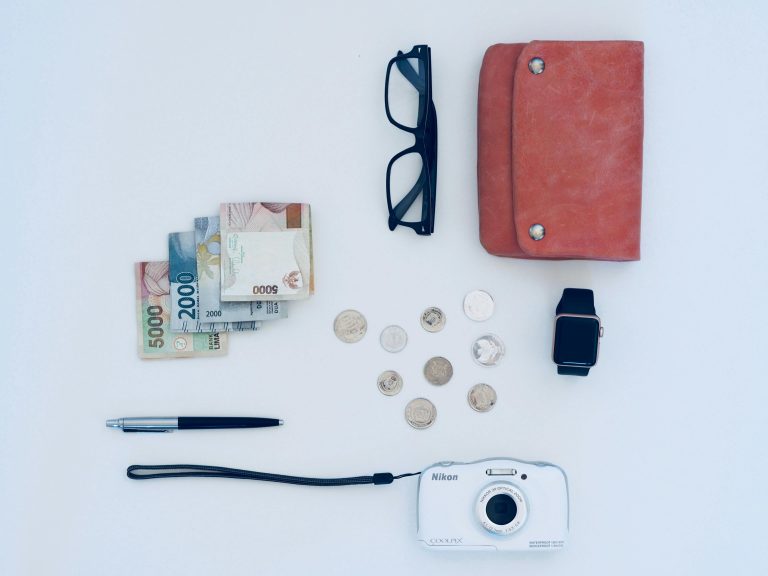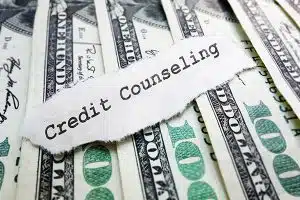What Is Financial Minimalism?
Financial minimalism is a way of managing money that focuses on simplicity and clarity. This involves reviewing your spending and expenses, reducing unnecessary purchases, and focusing on what truly enriches your life. Basically, key principles are living within or below your means, prioritizing savings and investments, and making financial choices that reflect your goals and values. Financial minimalism seeks a life where money is a tool for dreams, not a cause of stress and debt. You May Also Like: DINK Lifestyle: How to Get the Most Out of Living Double Income, No KidsHow Does Financial Minimalism Work?
 Financial minimalism simplifies your finances through mindful management of savings, careful spending, and efforts to save and reduce debt. Practicing it means prioritizing essential expenses and cutting non-essential possessions that don’t add value to your life.
Further, this approach helps you avoid the trap of living paycheck to paycheck and accumulating less debt. By focusing on a minimalist lifestyle, you shift your mindset towards valuing experiences over items, leading to financial well-being and the possibility of becoming debt-free. Financial minimalists often consolidate multiple accounts for simplicity, carefully plan for unexpected expenses like car insurance or a car payments, and avoid taking on new car loans. They also seek to create room in their budget for extra money directed toward savings accounts or investments.
By spending money more intentionally, you can keep living expenses manageable, enabling you to contribute automatic transfers to a savings or investment account. Regular check-ups on your finances help identify areas where you might be spending unnecessarily—on things like cable TV or new clothes—and adjust accordingly.
Certainly, financial minimalism instills habits that help you build a life with less financial stress and more savings, steering you toward financial freedom. It’s about making spending decisions that align with your values and long-term financial goals, ensuring that every dollar you spend money on has a purpose. This minimalist approach to finances not only aids in managing current expenses and debts but also in planning for the future, safeguarding against unexpected expenses, and achieving long-term financial security.
Read More: Financial Literacy Books: Top 10 Must-Reads To Earn Money
Financial minimalism simplifies your finances through mindful management of savings, careful spending, and efforts to save and reduce debt. Practicing it means prioritizing essential expenses and cutting non-essential possessions that don’t add value to your life.
Further, this approach helps you avoid the trap of living paycheck to paycheck and accumulating less debt. By focusing on a minimalist lifestyle, you shift your mindset towards valuing experiences over items, leading to financial well-being and the possibility of becoming debt-free. Financial minimalists often consolidate multiple accounts for simplicity, carefully plan for unexpected expenses like car insurance or a car payments, and avoid taking on new car loans. They also seek to create room in their budget for extra money directed toward savings accounts or investments.
By spending money more intentionally, you can keep living expenses manageable, enabling you to contribute automatic transfers to a savings or investment account. Regular check-ups on your finances help identify areas where you might be spending unnecessarily—on things like cable TV or new clothes—and adjust accordingly.
Certainly, financial minimalism instills habits that help you build a life with less financial stress and more savings, steering you toward financial freedom. It’s about making spending decisions that align with your values and long-term financial goals, ensuring that every dollar you spend money on has a purpose. This minimalist approach to finances not only aids in managing current expenses and debts but also in planning for the future, safeguarding against unexpected expenses, and achieving long-term financial security.
Read More: Financial Literacy Books: Top 10 Must-Reads To Earn Money
What Is The Difference Between Being Cheap and Being Financially Minimalistic?
 Many confuse financial minimalism with being cheap, but there’s a significant difference. Being cheap focuses solely on spending as little money as possible, often at the expense of quality, value, and, sometimes, personal ethics. In contrast, a financial minimalist prioritizes mindful spending. Minimalists are okay with spending more money on high-quality items that last longer or experiences that add genuine value to their lives, even if it costs extra cash.
Financial minimalism encourages you to consider how and why you spend your money, ensuring that every purchase supports a fulfilling life and long-term financial security. It’s not about denying yourself pleasures but about making spending decisions that bring absolute joy and benefit.
You May Also Like: Can People Still Afford to Have Kids?
Many confuse financial minimalism with being cheap, but there’s a significant difference. Being cheap focuses solely on spending as little money as possible, often at the expense of quality, value, and, sometimes, personal ethics. In contrast, a financial minimalist prioritizes mindful spending. Minimalists are okay with spending more money on high-quality items that last longer or experiences that add genuine value to their lives, even if it costs extra cash.
Financial minimalism encourages you to consider how and why you spend your money, ensuring that every purchase supports a fulfilling life and long-term financial security. It’s not about denying yourself pleasures but about making spending decisions that bring absolute joy and benefit.
You May Also Like: Can People Still Afford to Have Kids?
What Are The Impacts of Cluttered Finances?

Emotional and Psychological Effects
Cluttered finances can significantly impact your mental well-being. Just as a messy room can overwhelm you, a disorganized financial life filled with unnecessary expenses and unchecked spending can lead to heightened stress and anxiety. Despite, constant worry about bills, debt, and unknown expenses can disrupt sleep, strain relationships, and lower life quality. Financial stress creates a cycle where poor money management leads to worse financial decisions, exacerbating the problem.The Hidden Costs of Excess
Beyond the emotional toll, cluttered finances come with hidden financial costs. Unnecessary purchases, like impulse buys or unused subscriptions, drain savings without adding value. Failing to track expenses can lead to late fees, higher interest rates, and missed savings or investment opportunities. Eventually, money spent on non-essentials fails to support financial goals, build emergency funds, or secure financial freedom. The real cost includes lost opportunities for growth, investment, and a secure financial future.Barriers to Financial Goals
Further, cluttered finances can hinder reaching key financial milestones like building an emergency fund, saving for retirement, or buying a home. A clear economic plan is needed to prioritize and allocate funds effectively toward these goals.Reduced Financial Flexibility
Excessive spending and poor financial management reduce your ability to adapt to unexpected financial challenges or opportunities. With sufficient savings and a buffer in your budget, you might be in manageable situations, such as needing high-interest loans to cover emergencies.Impeded Personal Growth
Finally, a cluttered financial situation can also stifle personal development. Financial stress can consume mental energy and time that could otherwise be invested in learning new skills, pursuing hobbies, or enhancing relationships. Achieving a balanced and fulfilling life requires emotional and physical well-being and financial health. Read More: What Is Loud Budgeting?Steps to Declutter Your Finances
@mindfulness.with.mads Here are my top 3 minimalist budgeting tips! #minimalism #becomingminimal #financialadvice #fyp
♬ Sunset Vibes - Lofi Network
Tiktok video by Madison.
Assessing Your Financial Situation
The first step to decluttering your finances involves a comprehensive look at your current financial situation. This means reviewing your income, expenses, savings, and debt. Create a detailed list or spreadsheet to track where your money is coming from and where it’s going each month. Generally, this overview will highlight areas of strength and pinpoint where financial minimalism is needed, giving you a clear starting point for decluttering your financial life.Identifying Non-Essential Expenses
With a clear understanding of your financial situation, the next step is to scrutinize your spending habits. Look for non-essential expenses—those unnecessary purchases that don’t add significant value to your life or contribute to your financial goals. Common areas include subscriptions you rarely use, dining out frequently, or impulse buys. Consider employing the 30-day rule for purchases outside your regular spending—wait 30 days before buying to see if you still want or need the item. This period can help reduce impulse spending significantly.Simplifying Financial Accounts and Tools
A cluttered financial life may involve too many bank accounts, credit cards, and financial apps, complicating effective tracking. Begin by consolidating bank accounts and closing unused credit cards, particularly those with high fees or rates. Similarly, evaluate the financial apps and tools you’re using. Keep only those that help you manage your finances efficiently, whether for budgeting, tracking expenses, or investing. Simplifying your financial accounts and tools makes managing money more accessible, reduces the risk of overspending, and improves your overall economic well-being. You May Also Like: House or Car: What Should You Buy First?Implementing a Financially Minimalistic Lifestyle

Creating a Minimalist Budget
Designing a minimalist budget starts with focusing on your essentials—housing, food, health insurance, and transportation. Next, align your spending with your personal values and financial goals. This means allocating money based on needs and what brings you joy and fulfillment. For example, if travel is essential to you, prioritize saving for it. A minimalist budget isn’t about restriction but about making room for more money to flow toward your priorities by cutting out unnecessary expenses. Use tools like budgeting apps or spreadsheets to keep you on track.Investing with Purpose
Investing is a crucial component of financial minimalism. Make intentional choices about where to put your money, focusing on investments that match your risk tolerance and time horizon. For a diversified approach, consider low-cost index funds or ETFs (exchange-traded funds). Investing purposefully also means understanding your investment account options and choosing ones that align with your goals, whether retirement, buying a home, or starting a business.Mindful Spending
Mindful spending is at the heart of a financially minimalistic lifestyle. It involves taking a moment to consider each purchase: Do I need this? Does it add value to my life? Will it help me reach my financial goals? This practice helps reduce impulse buying and ensures deliberate spending decisions. Mindful spending doesn’t mean you never treat yourself; instead, it’s about providing meaningful treats that don’t detract from your financial freedom. Tools like spending trackers can help you monitor your habits and adjust as needed to maintain alignment with your minimalist approach to finances. Read More: What Is Revenue-Based Finance? Unlock Your Business’ GrowthMaintaining Financial Minimalism
Financial minimalism - your best tips and tricks
byu/eatprayluhv inminimalism
Regular Financial Check-ins
To sustain financial minimalism, it’s crucial to establish a routine of regular financial check-ins. This involves periodically reviewing your financial goals, spending habits, and the overall state of your finances. These check-ins help adjust your budget, track progress towards savings and debt targets, and align spending with your values. Regularly evaluating your finances monthly or quarterly catches issues early and aids in achieving financial freedom.Adapting to Life Changes
Life is dynamic, and your financial life needs to be flexible enough to adapt to changes such as a new job, marriage, or childbirth. Maintaining financial minimalism through these transitions involves reassessing your financial goals and spending plan to accommodate your new circumstances. For example, a child’s birth might shift financial priorities towards education savings or a larger emergency fund. The key is adhering to financial minimalism principles by making intentional adjustments to support your changing lifestyle and goals.Building a Support System
Embarking on a financially minimalistic lifestyle can be challenging, especially when faced with societal pressures to spend and consume. Building a support system of like-minded individuals or communities offers encouragement and advice to maintain minimalist principles. Whether with family, friends, or online finance and minimalism forums, being around those who support your financial choices can be crucial. These communities provide practical tips, share experiences, and celebrate milestones, aiding your financial journey with confidence and camaraderie. You May Also Like: Assets vs. Liabilities: Understand the Key to Finances NowConclusion
Embracing financial minimalism is not just about cutting costs or living with less—it’s about creating space for more of what truly matters in your life. By decluttering your finances, focusing on your goals, and investing in experiences and assets that bring genuine value, you pave the way for a more fulfilling financial journey. Financial minimalism encourages you to question your needs, prioritize your spending, and achieve greater financial freedom. Remember, the goal is not to minimize joy but to maximize it by aligning your financial life with your values and aspirations. With regular check-ins, adaptability, and a robust support system, you can maintain a minimalist approach to your finances, ensuring long-term financial security and a life rich in experiences, not clutter.Frequently Asked Questions
What are the first steps towards becoming a financial minimalist?
The first steps towards financial minimalism involve reviewing and understanding your current financial situation, including all incomes, expenses, debts, and investments. Next, identify and cut back on non-essential spending. Finally, establish a simplified budget that aligns with your core values and financial goals.
How can financial minimalism help in managing debt?
By adopting financial minimalism, you can more effectively manage debt by prioritizing spending and eliminating unnecessary expenses. This approach frees up more resources to pay down debts faster and prevents the accumulation of new debt by promoting a less materialistic lifestyle.
Can financial minimalism help with saving for retirement?
Yes, financial minimalism can significantly aid in saving for retirement. By reducing expenditures on non-essentials, you can increase the amount of money available to contribute to retirement accounts. Additionally, a minimalist approach often leads to a lower cost of living, which can make it easier to sustain your lifestyle in retirement on less money.












